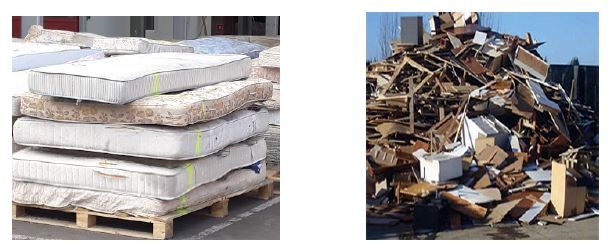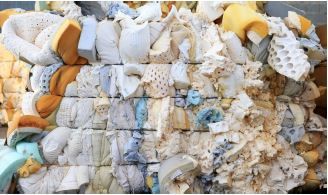Veolia's commitment to research projects for recycling and waste collection
Create a subpage- Alexia ROBIN
- /
- the 29-05-2019
- / 1194
The SB&WRC project is part of the Programme Interreg VA France (Channel) England and benefits from financial support from the ERDF.
In France, a French industry for the management of furnishing items waste (Déchets d’Eléments d’Ameublement in French - DEA) has been organised since 2013, following the principle of Extended Producer Responsibility (EPR).
As a reminder, "furnishing items" include the following elements:
- living room / dining room furniture
- occasional furniture
- bedroom furniture
- bedding
- office furniture
- kitchen furniture
- bathroom furniture
- garden furniture
- seating
- technical, commercial and community furniture
- upholstered seat or sleeping products (duvets, pillows, cushions ...).
Two French eco-organizations, "ÉcoMobilier" and "Valdélia", are approved until 31 December 2023 by the public authorities according to the provisions of a new decree published on the 27th of November 2017, to provide for prevention, collection and DEAs treatment.
The objectives are as following (according to Decree No. 2017-1607 of the 27th of November 2017 and the Order of the 27th of November 2017):
- a collection rate in 2023 of DEAs collected separately from other waste of 40% of the quantities of furniture items placed on the market;
- A 50%-recycling in 2022 of DEAs collected separately from other waste;
- A recovery (reuse, recycling and energy recovery) in 2022 of 90% of DEAs collected separately from other waste;
- The possibility of making available to the players of the social and solidarity economy: 1.5% of DEAs collected from 2021 for those held by households, 5% for other owners, and according to a criterion of quality allowing a 60%-rate of reuse of these DEAs.

Every year, nearly 860,000 tonnes of DEAs are collected, 80% of which are given a second life through reuse, recycling or energy recovery.
In order to participate in the increase of recycling rates and in particular to reach the additional 10% of reuse rate, recycling or energy recovery, VEOLIA has been involved for years in research projects such as:
- Recycmousse (financed by Ademe, the French Environment and Energy Management Agency, 2010-2012) > results allowed to make recommendations on collection systems of used mattresses and on the importance of the hygienisation phase of hygiene for the health of the operators;
- DEMOWOOD (funded by the European Commission, 2011-2014) > the objective was to optimise the material and energy recovery of waste wood / demolition wood in different value chains;
- Recyfibres (funded by Ademe, Ecomobilier and Valdelia, 2015-2017) > the objective was to study the feasibility of 2 recycling channels for wood DEAs (insulation board and pulp);
- Future For Foam (funded by Ecomobilier through the Eco-Innovation Challenge2, 2018-2020) > the objective is to find a sustainable recycling stream for used polyurethane foam and latex mattresses;
- SB&WRC (funded by the European Union from the Interreg VA France (Channel) England programme, 2017-2019) > the objective is to design and produce 3 prototypes of building thermal insulation based on bio-based and waste-based raw materials (including used duvets and pillows).

VEOLIA is also involved, at an operational level, in the used bedding management through the dismantling unit of used mattress based in Rennes since 2015, in partnership with Envie 2E Recyclage Bretagne.
VEOLIA uses its experience to participate in various operational studies related to the implementation of a collection system for certain furniture items such as used duvets and pillows.

These various experiments lead the different actors from recycling sectors to ask questions and anticipate some issues for the establishment of new streams. More particularly regarding upholstered bedding items (duvets, pillows...), it is necessary to engage in reflections
- the most efficient and economically viable ways of collection, depending on the diffuse nature of this waste and the volume of each item,
- the means to put in place to reduce their volume during their collection;
- the hygienisation: is it similar to the hygienisation of mattresses in dismantling units?;
- the variety of materials and of articles design (multi-material or monomaterial, sewing or not, polyester or feather...).
VEOLIA remains an active player engaged in these topics of furniture items waste recycling and collection. The Group is constantly aware of the challenges that have to be taken during the next few years.
Article written by VEOLIA, SB&WRC project partner